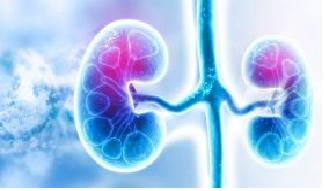TEXAS, Oct 22 DNA):Researchers at the Texas A&M University Health Science Centre have uncovered a hidden mechanism that drives the growth of one of the most aggressive forms of kidney cancer affecting children and young adults and have developed a way to block it at its source.
The study, published in Nature Communications, reveals that RNA, normally a messenger molecule, is hijacked by cancer cells to form liquid-like “droplet hubs” in the nucleus. These hubs act as command centres that activate growth-promoting genes.
The team created a molecular switch that dissolves these droplets on demand, stopping tumour growth in both laboratory and animal models. The cancer, called translocation renal cell carcinoma (tRCC), is caused by TFE3 oncofusions, hybrid genes formed when chromosomes fuse incorrectly.
“RNA is not just a messenger but an active player that builds these condensates,” said Dr. Yun Huang, Professor at the Texas A&M Health Institute of Biosciences and Technology. The researchers also identified an RNA-binding protein, PSPC1, that stabilises the droplets, making them powerful engines for tumour growth.
Using tools such as CRISPR gene editing and next-generation sequencing, the team mapped how TFE3 oncofusions and RNA interact to form these hubs. They then developed a nanobody-based chemogenetic tool – a molecular “off switch” that, when triggered, dissolves the droplets, halting cancer’s spread.
“This discovery offers a new way to target a cancer with few effective treatments,” said Dr. Yubin Zhou, Director of the Centre for Translational Cancer Research. “By disrupting condensate formation, we open a path to therapies that are more precise and less toxic.”
Because many childhood cancers are driven by similar fusion proteins, the researchers believe this approach could be applied to other aggressive tumours. “By understanding how these proteins interact with RNA, we are uncovering weak points that can be targeted for therapy,” said Dr. Lei Guo, Research Assistant Professor at the Institute of Biosciences and Technology.
Translocation renal cell carcinoma accounts for about 30 percent of renal cancers in children and adolescents, and effective treatments remain limited. This discovery offers new hope for young patients and families facing this devastating disease.

















